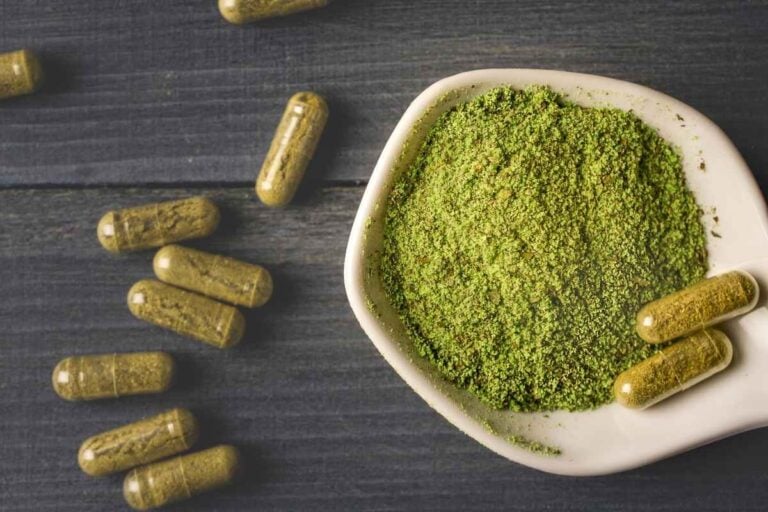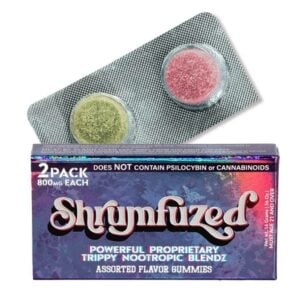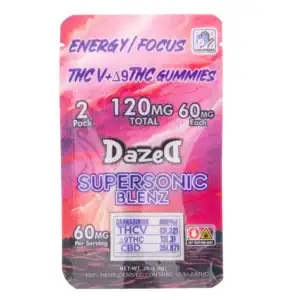What Does 7-Hydroxymitragynine Do? Understanding Its Effects and Uses
Introduction to 7-Hydroxymitragynine
7-Hydroxymitragynine is a naturally occurring alkaloid derived from mitragynine, the primary active compound in kratom leaves, and is considered an active metabolite. It is known for its strong analgesic properties and is one of the most potent alkaloids found in the kratom plant. This compound plays a key role in the overall effects kratom has on the body, particularly its pain-relieving and sedative benefits, as it can directly activate opioid receptors.
- Introduction to 7-Hydroxymitragynine
- Origin and Discovery
- Alkaloid Structure and Activity
- Mechanism of Action
- Interaction with Opioid Receptors
- Pharmacokinetics of 7-Hydroxymitragynine
- Analgesic Effects in Pain Management
- Comparison to Traditional Opioids
- Relationship with Mitragynine
- Differences Between the Two Compounds
- Impact on Mood and Stress
- Therapeutic Uses Under Investigation
- Use in Opioid Withdrawal Support
- Sedative and Relaxation Effects
- Potential for Drug Abuse
- User Experiences and Testimonials
- Adverse Effects and Safety Concerns
- Risk of Tolerance and Dependency
- Legal Status Worldwide
- Regulation in the United States
- Current Research and Clinical Studies
- Role in Kratom's Overall Effects
- Dosage Considerations
- Drug Interactions and Contraindications
- Detection and Drug Testing
- Animal Studies and Laboratory Research
- Natural vs Synthetic Use
- Future of 7-Hydroxymitragynine Research
- Conclusion: A Compound Worth Watching
- Frequently Asked Questions (FAQ)
Origin and Discovery
The compound was identified during efforts, supported by the national institute on drug research, to understand the pharmacological actions of kratom. Researchers discovered that 7-hydroxymitragynine, although found in small quantities, contributes disproportionately to the effects of the plant, and this active metabolite plays a crucial role in its action. It is produced in the body as a metabolite after mitragynine is consumed.
Alkaloid Structure and Activity
Structurally, 7-hydroxymitragynine belongs to the class of indole alkaloids and exhibits significant biological activity, contributing to its overall pharmacological activity. It binds to opioid receptors with high affinity, especially the mu-opioid receptor, showcasing its opioid receptor binding affinity. which plays a crucial role in pain perception and reward.
Mechanism of Action
This compound acts as a partial agonist at mu-opioid receptors, similar to atypical opioid agonists, which means it activates these receptors without producing the full effects seen with classical opioids, resulting in notable analgesic effects. This selective action contributes to both its therapeutic potential and is effective in inducing therapeutic effects, although there may be some negative side effects. and its comparatively reduced risk of respiratory depression.
Interaction with Opioid Receptors
| Opioid Receptor | Interaction Type | Effect of 7-Hydroxymitragynine | Significance |
|---|---|---|---|
| Mu-Opioid Receptor (MOR) | Agonist (High Affinity) | Binds strongly and activates MOR, producing analgesic (pain-relief) and euphoric effects | Main contributor to kratom’s opioid-like effects; high risk for dependence at elevated doses |
| Delta-Opioid Receptor (DOR) | Weak Agonist | Some interaction, but with low potency and efficacy | May modulate mood or provide mild mood-lifting effects |
| Kappa-Opioid Receptor (KOR) | Partial Agonist or Minimal Activity | Weak or inconsistent binding; less activation than mitragynine | May limit dysphoric or sedative effects typically associated with KOR |
| Opioid Receptor Selectivity | Highly Selective for MOR | Prefers MOR over DOR and KOR receptors | Explains its potent analgesic and sedative actions similar to traditional opioids |
| Receptor Desensitization/Tolerance | Possible with Chronic Use | Repeated exposure may downregulate MOR activity | Leads to reduced effectiveness over time and potential withdrawal symptoms |
| G-Protein vs. β-Arrestin Pathway | G-Protein Biased Agonist | Activates MOR with minimal β-arrestin recruitment | May reduce respiratory depression and constipation compared to morphine-like opioids |
7-Hydroxymitragynine binds with high potency to the brain’s opioid receptors in kratom, primarily targeting the mu subtype. This interaction leads to analgesia, euphoria, and sedation, especially at high concentrations relative to other kratom alkaloids.. However, unlike full agonists like morphine, it may carry a lower risk of dependency.
Pharmacokinetics of 7-Hydroxymitragynine
After ingestion, mitragynine is converted in the liver into 7-hydroxymitragynine through enzymatic action, similarly observed in human liver preparations. This metabolite reaches the brain and produces noticeable effects. Its half-life, bioavailability, and duration of action vary depending on individual metabolism and method of consumption.
Analgesic Effects in Pain Management
One of the most well-documented effects of 7-hydroxymitragynine is pain relief, along with other purported effects that merit further investigation. In animal studies, it has shown analgesic potency several times stronger than morphine, demonstrating significant analgesic activity. This makes it a potential alternative for managing chronic and acute pain conditions, alongside other kratom compounds.
Comparison to Traditional Opioids
When compared to prescription opioids, 7-hydroxymitragynine has demonstrated similar pain-relieving properties but with fewer side effects in preliminary research. However, more clinical trials are needed to confirm this in human subjects.
Relationship with Mitragynine

Mitragynine is the dominant alkaloid in kratom, and 7-hydroxymitragynine is its most potent metabolite and is considered a major active alkaloid found in kratom. While mitragynine has stimulant effects at lower doses, 7-hydroxymitragynine primarily contributes to the sedative and analgesic effects found in kratom products.
Differences Between the Two Compounds
Mitragynine and 7-hydroxymitragynine have different affinities for opioid receptors and produce varying effects, particularly when comparing mitragynine and 7. The former is less potent and more abundant, while the latter is more potent and acts faster despite its lower concentration in the plant.
Impact on Mood and Stress
Some users report evidence of experiencing improved mood, reduced anxiety, and a calming sensation when using kratom. These effects are largely attributed to 7-hydroxymitragynine’s interaction with the brain’s opioid and serotonin systems, potentially impacting opioid addiction.
Therapeutic Uses Under Investigation
Researchers are exploring whether 7-hydroxymitragynine can be developed into a pharmaceutical drug for treating pain, anxiety, or opioid dependence. Its dual action as a pain reliever and mood stabilizer makes it a compound of interest in alternative medicine.
Use in Opioid Withdrawal Support
| Aspect | Details | Why It Matters |
|---|---|---|
| Mechanism of Action | Partial agonist at Mu-Opioid Receptors (MOR) | Mimics opioids mildly, easing withdrawal symptoms without full intoxication |
| Primary Effects | Reduces anxiety, pain, restlessness, and cravings | Targets core withdrawal symptoms effectively |
| Onset of Relief | 10–30 minutes (depending on form and dose) | Fast-acting support during peak withdrawal |
| Forms Commonly Used | Kratom leaf powder, capsules, or extracts containing 7-OH | Easily accessible and dose-controlled |
| Dosage Considerations | Low to moderate doses (1–5 grams leaf powder) recommended | High doses increase dependency and side effects |
| Short-Term Benefits | Improves mood, energy, sleep, and pain tolerance during acute withdrawal | Aids transition off opioids more comfortably |
| Long-Term Use Risks | Potential for dependency, tolerance, and withdrawal | Should be tapered off gradually; not a permanent solution |
| Comparative Effectiveness | Considered milder and safer than methadone or buprenorphine in some reports | Useful where prescription treatments aren’t accessible |
| Legal Status | Legal in some states; banned or restricted in others | Users must verify legality before use |
| Medical Supervision | Strongly recommended for safe, structured use | Especially important for those with existing addiction history |
Many individuals have used kratom, and by extension 7-hydroxymitragynine, to manage opioid withdrawal symptoms, a phenomenon also observed in animal models. Its ability to bind to opioid receptors may help ease the cravings and physical discomfort associated with opioid use and withdrawal, but it also raises concerns about its potential abuse liability.
Sedative and Relaxation Effects
At higher doses, 7-hydroxymitragynine induces deep relaxation and sedation. These effects can help with insomnia, muscle tension, and anxiety, although they may also impair motor coordination and reaction time.
Potential for Drug Abuse
Despite its therapeutic promise, 7-hydroxymitragynine has shown rewarding effects in animal studies at very high concentrations, which raises concerns about its abuse potential. Long-term or high-dose use may lead to dependence in vulnerable individuals.
User Experiences and Testimonials

Kratom users frequently share experiences that describe pain relief, reduced anxiety, and improved quality of life. However, reports also mention side effects like nausea, dizziness, and dependency with prolonged use.
Adverse Effects and Safety Concerns
Side effects associated with 7-hydroxymitragynine include nausea, constipation, dry mouth, and in rare cases, respiratory depression. Its interaction with other drugs can also lead to complications.
Risk of Tolerance and Dependency
Like other opioids, 7-hydroxymitragynine can lead to tolerance, where users need higher doses to achieve the same effect. Prolonged use may also result in physical or psychological dependence.
Legal Status Worldwide
The legality of kratom and its alkaloids varies by country and state, particularly concerning its status as a plant native to Southeast Asia. Some regions have banned kratom due to concerns over abuse, invoking the controlled substances act as noted by the drug enforcement administration, while others allow it for therapeutic or recreational use. 7-hydroxymitragynine, specifically, is often regulated more strictly.
Regulation in the United States
In the U.S., the DEA has considered scheduling kratom as a controlled substance due to the actions of 7-hydroxymitragynine. However, public opposition and limited data have prevented national prohibition so far.
Current Research and Clinical Studies
Ongoing studies aim to explore the safety, efficacy, and abuse potential of 7-hydroxymitragynine, highlighting the need for further research in this area. Research is in early stages, but interest is growing in both academic and pharmaceutical sectors.
Role in Kratom’s Overall Effects
7-Hydroxymitragynine is considered one of the most important alkaloids responsible for kratom’s pain-relieving and sedative properties, highlighting what kratom represents in alternative medicine. Its presence significantly enhances the potency of kratom, especially in red vein strains.
Dosage Considerations
Dosage can vary based on the strain of kratom, user tolerance, and individual physiology. Since 7-hydroxymitragynine is not often sold alone, users must rely on kratom leaf content or standardized extracts.
Drug Interactions and Contraindications
7-Hydroxymitragynine may interact negatively with other central nervous system depressants such as alcohol, benzodiazepines, or prescription opioid agonists. Caution is advised when combining it with any other substance.
Detection and Drug Testing
| Test Type | Can Kratom Be Detected? | What’s Detected? | Detection Window | Notes |
|---|---|---|---|---|
| Standard 5-Panel Drug Test | ❌ No | Kratom is not included | N/A | Common workplace tests (for THC, cocaine, opioids, etc.) do not detect kratom |
| 10-Panel or Expanded Tests | ❌ Usually not | Not typically included | N/A | Even advanced panels usually exclude kratom unless specifically requested |
| Specialized Kratom Test | ✅ Yes | Mitragynine, 7-Hydroxymitragynine | 1–7 days (urine) | Requires targeted testing; not standard in most labs |
| Urine Test | ✅ With specialized test | Mitragynine/7-OH | Up to 7 days after last dose | Most common method for kratom detection |
| Blood Test | ✅ With targeted testing | Mitragynine/7-OH | 6–24 hours | Detects recent use; less common due to cost and short window |
| Hair Follicle Test | ✅ Possible | Mitragynine (if present) | Up to 90 days | Rarely used for kratom; not widely available |
| Saliva Test | ❓ Rare | Low reliability | Unknown | Kratom is not commonly tested in saliva screenings |
| Military/Probation Testing | ⚠️ Sometimes | Depends on agency | Variable | Certain government or legal settings may test for kratom |
| DOT (Department of Transportation) | ❌ Not tested | N/A | N/A | Kratom is not part of the DOT drug testing panel |
| False Positives | ❌ Unlikely | Kratom doesn’t usually trigger false positives for opioids | Structurally different from traditional opiates |
Although standard drug tests typically do not screen for kratom alkaloids, specialized tests can detect 7-hydroxymitragynine. Some workplaces and law enforcement agencies have started using advanced testing methods for it.
Animal Studies and Laboratory Research
Studies on rodents have shown that 7-hydroxymitragynine can produce both analgesic and reinforcing effects. These findings help inform our understanding of its safety profile and suggest a metabolism dependent mechanism, with results presented in detailed studies. but need to be replicated in humans.
Natural vs Synthetic Use
There is a growing interest in synthesizing 7-hydroxymitragynine for medical use, but this brings ethical and regulatory questions. Natural consumption via kratom leaves remains the most common route of exposure.
Future of 7-Hydroxymitragynine Research

The future holds promise for unlocking the full therapeutic potential of 7-hydroxymitragynine, supported by existing data on its effects. If developed responsibly through careful study, it could revolutionize pain management and addiction recovery.
Conclusion: A Compound Worth Watching
7-Hydroxymitragynine offers a unique balance of potent effects and therapeutic promise. However, its potential for abuse necessitates caution and regulation, which further research may highlight critical areas for policymakers. As research continues, this compound may emerge as a vital tool in modern medicine—or a substance requiring strict oversight.
Frequently Asked Questions (FAQ)
1. What is 7-hydroxymitragynine used for?
7-Hydroxymitragynine is primarily used for its pain-relieving and sedative effects, especially at high concentrations relative to mitragynine. It is one of the active compounds in kratom that users rely on for managing chronic pain, anxiety, and opioid withdrawal symptoms. It is not officially approved for medical use but is commonly consumed through kratom products.
2. Is 7-hydroxymitragynine stronger than mitragynine?
Yes, 7-hydroxymitragynine is significantly more potent than mitragynine. Even though it appears in smaller concentrations, it has a higher binding affinity for delta opioid receptors, making it much more powerful in terms of analgesic and sedative effects.
3. Does 7-hydroxymitragynine get you high?
In high doses, 7-hydroxymitragynine may produce euphoria and sedation, which some people may describe as feeling “high.” However, these effects can also include drowsiness, dizziness, and nausea, effects typical of opioids especially if taken irresponsibly or in combination with other substances.
4. Can 7-hydroxymitragynine cause addiction?
Yes, like other opioid receptor agonists that can directly activate opioid receptors, 7-hydroxymitragynine carries a risk of dependence and addiction, particularly with long-term or high-dose use. While it may have a lower abuse potential compared to traditional opioids, regular use can lead to tolerance and withdrawal symptoms.
5. Is 7-hydroxymitragynine legal?
The legality of 7-hydroxymitragynine varies by region. In some U.S. states and countries, kratom and its alkaloids, including 7-hydroxymitragynine, are banned or restricted. In other areas, it remains legal or unregulated, but users should check local laws before purchasing or consuming.
6. Does 7-hydroxymitragynine show up on a drug test?
Standard drug tests typically do not detect 7-hydroxymitragynine. However, more advanced or targeted testing can identify kratom alkaloids. Some specialized drug panels used in law enforcement or pain clinics may screen for it.
7. How long does 7-hydroxymitragynine stay in your system?
The elimination half-life of 7-hydroxymitragynine is not fully established, but it is believed to remain in the system for 24 to 48 hours depending on factors like dose, frequency of use, metabolism, body weight, and its origins from southeast asia.
8. Is it safe to take 7-hydroxymitragynine with other medications?
Caution is strongly advised, especially considering how kratom acts, as 7-Hydroxymitragynine may act as an uncontrolled drug that may interact with other central nervous system depressants, including opioids, benzodiazepines, and alcohol, potentially leading to dangerous side effects such as respiratory depression or sedation.
9. Can 7-hydroxymitragynine help with opioid withdrawal?
Many users report that kratom, via 7-hydroxymitragynine and other related compounds, helps ease opioid withdrawal symptoms like pain, anxiety, and cravings. However, it is not an FDA-approved treatment, and medical supervision is recommended if using it for detox or recovery.
10. Where is 7-hydroxymitragynine found?
7-Hydroxymitragynine is a naturally occurring compound in kratom, though it exists in very low concentrations. It is mainly formed in the body when mitragynine, derived from mitragyna speciosa, is metabolized in the liver, rather than being abundant in the plant itself.







